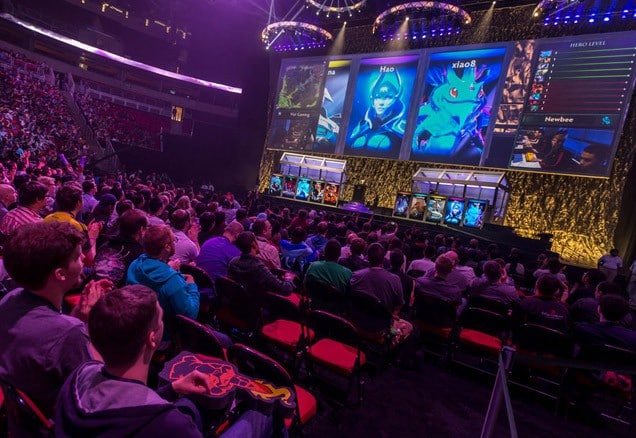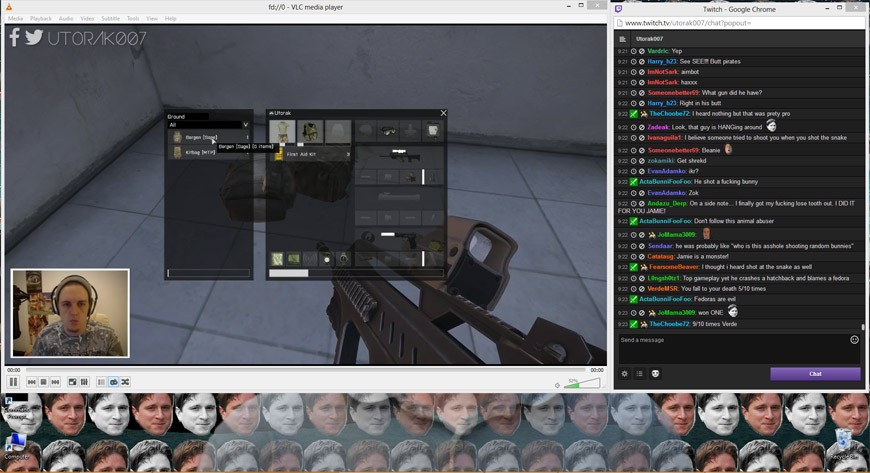So You Wanna Work in the Video Game Industry Huh?
Ever since the original Pong machine swallowed its first belly full of quarters, the video game industry was destined to conquer the interactive entertainment monetary mountain. However, despite the industry’s consistently climbing revenue over several decades time, it continued to garner a collective thumbing of the nose from the general public . . . honestly, how could a mere digital diversion amount to anything more than a quick dip into a two-dimensional sandbox on a rainy day?
So said skeptics . . . but as the lining of its stomach stretched with sales and the thumbs of a million gamers swelled coarse with calluses, the mere digital diversion of the video game gradually succeeded to the throne of the world’s number one entertainment medium.
Not Millions . . . Billions!
Just how big is the video game industry today?
Here are a few numbers to establish some scale. The United States music industry cracked $7 billion in sales in 2013. The U.S. theatrical box office did $10.9 billion that same year. The video game industry? It reported $21 billion in U.S. sales. Nearly twice that of the movie industry.
The video game industry grew 9.6 percent from 2009 to 2012, which is four times faster than the growth of the entire U.S. economy. And globally? The video game industry bagged $63 billion in software revenue alone in 2014 and it’s expected to hit $100 billion by 2018. Such a chunk of change could finance nearly a year of international war. And considering that a Virtual Realty revolution is on the horizon, the commercial value of the video game industry will only continue to rise.
Inevitably, a swelling behemoth of revenue demands a just as particularly plump investment of money . . . the hundreds of millions kind of plump. For example, Rockstar Games phenomenon Grand Theft Auto V donned a reputed $265 million production price tag (rivaling the most expensive of Hollywood blockbusters). Well worth the cost, considering GTA V hit $1 billion in sales within only three days of its release.
Third parties are reacting accordingly by piggy-backing off the success of the industry and offering a fresh means of meeting the exceedingly high standards set by game developers. Case in point, the list of universities offering video game design degrees is stretching like a selfie stick in order to accommodate the ballooning career interest of young professionals. However, some creative types are spearheading a more hands-on approach to breaking into the video game business.
A Director’s Call of Duty
Jeff Chan finished film school in 2008 and knew he wanted to be a director. But the first couple of years following his college graduation were anything but easy. His life was marked by unemployment as well as a constant struggle to establish an effective angle for breaking into the entertainment industry.
However, Chan’s struggle moon lighted as a learning experience because it allowed him the time to observe and absorb the strategies of those achieving success in the industry. “Seeing the way people are getting noticed, a lot of it is making things on our own, seeing how people respond and seeing if you can find an audience,” Chan tells Millennial.
Soon enough, Chan did find his audience.
Being an avid gamer, Chan decided to put together a low-budget, self-financed fan film inspired by the Call of Duty video game series. The short film was entitled Find Makarov.
Chan wanted the film to act as his personal calling card in the film industry but he didn’t realize how big it would be . . . Find Makarov went viral and became so popular that it led to Activision (the Call of Duty series publishers) hiring Chan to make a short film based on their then-upcoming Modern Warfare 3 game. “They saw the opportunity and the response. Rather than getting lawyers, they were like, let’s hire these guys and make them a part of this,” Chan says.
Chan’s Call of Duty shorts have led to him landing production deals with QED International (District 9, Elysium) and Lions Gate (The Hunger Games series). But the fan films weren’t simply a calling card or a viral sensation; as Chan concludes, they were a statement . . . “I think you’re going to see a lot of video game people working in movies and vice versa. With storytelling, you should be able to work in both mediums.”
Video Game Industry Meets Interactive Entertainment
Given the skyrocketing revenue of the video game market, it’s not surprising that interactive entertainment has recently reached beyond the filmmaking industry to spawn fresh interactive platforms.
The current rooster in the interactive entertainment hen house is Twitch, an online streaming service that enables people to log into its service (via laptop, tablet or gaming console) and watch other gamers broadcast game-play through a live feed. Twitch draws in enough viewers to be able to share significant advertising revenue with its streamers (some broadcasters even rake in six figures annually). Amazon recently threw down a $1.1 billion chunk of change to purchase Twitch in 2014. Yeah, haters . . . plug that in your port and play it!
Ultimately, there really is no ‘ultimate’ to the evolution of the video game industry. Fresh markets created and enhanced by the video game industry continue to emerge.
Live streaming, fan conventions, professional gaming tournaments (yes, prizes even reach into the millions) and the increasingly popular Cosplay phenomenon are only a small handful of branches on the tree . . . but the trunk is wide . . . still wide enough to accompany anyone creative enough to unfold another layer of the interactive entertainment industry.
So, what’s stopping you from thinking outside the box?













